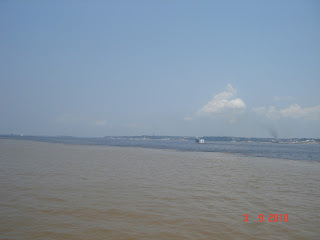Chapada dos Veadeiros
1 - Cerrado
An unbelievable - and very little known - place in the heart of Brazil
I decided to make a series of posts about a completely out-of-the-mainstream destination in Brazil. The Chapada dos Veadeiros, in the heart of Brazil, is a fabulous hidden place inside the Cerrado, as we call the brazillian savannah.
The Cerrado is a form of vegetation which spreads in the brazillian highlands in the center of the country, separating the other main biomes in the country, which are the Amazon rainforest, the Caatinga (the semi-dry area in the northeast), the Atlantic Jungle (or Mata Atlântica, mainly in the south-east region) and the Pantanal (the world´s biggest flooded plains, to the south-west).
There are basically two seasons, one rainy, from october to march, the other dry, from april to september. Heavy tropical storms may fall during the rainy season while dryness in august-september can be as bad or even worse than a desert.
Those humidity extremes have produced a very curious form of vegetation, with twisted trunks as a result of the severe lack of water; they have also a similar to cork bark, which protects the plants from fire, as vast areas can literally burn during the dry season. It is said those plants have common ancestrals as those from the Afriacan savannah, since earth was just one continent, the pangea.
While during august-september trees may seen dead, without leaves and mostly brown, the first rain by the end of september or beggining of october is enough for them to reburn with a lush greenness.
And all year-round there are trees flourishing, even without leaves. And even in semptember, the Yellow Ipê defies dryness flourishing its yellow flowers.
 The Cerrado comprises fields with short trees to thickets. Close to water streams, the Buriti palm stands as the king tree of the jungle.
The Cerrado comprises fields with short trees to thickets. Close to water streams, the Buriti palm stands as the king tree of the jungle.
In the following posts, I´ll write about the National Park of Chapada dos Veadeiros, the most important in the Cerrado area, although there are other Chapadas in Brazil. This name refers to a geological formation which can be described as a plateau with well outlined borders, relatively common in Brazil, where relief was carved over millions of years.


























































